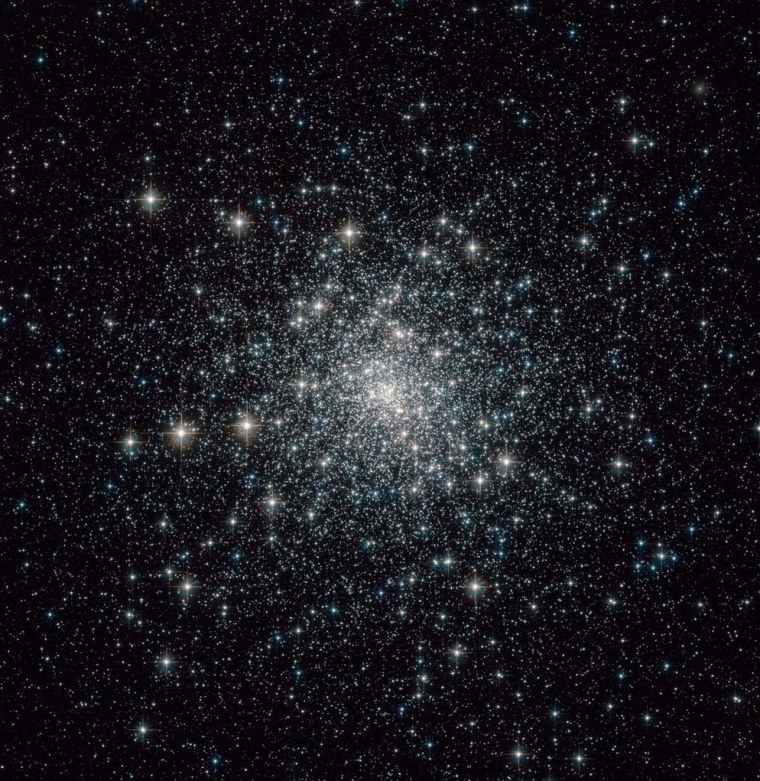Mysterious old stars that look oddly young found the fountain of youth via two means, new research finds. Some rely on vampirism to suck the life out of a companion star, while others are rejuvenated in cosmic collisions.
The strange stars exist among a tight group of stellar geezers in what's called a globular cluster. The whole setup called Messier 30 – an ancient knot of stars sitting 28,000 light-years away and within our Milky Way galaxy – is thought to have hit the scene about 13 billion years ago, when the universe was an infant.
Most of the stars look their age, bloated red giants that are about to call it quits. But a few, called blue stragglers, seem to have regained their youth. They look very much like hot young things.
"It's like seeing a few kids in the group picture of a rest-home for retired people," said Francesco Ferraro of the University of Bologna in Italy. "It is natural to wonder why they are there."
For nearly 50 years, astronomers have known of these blue stragglers. The leading theory to explain them is vampirism.
It works like this: Two stars orbit each other in a tight setup. The less massive one siphons fresh hydrogen from its more massive companion star, just as a vampire would suck blood from a lover. The new fuel causes the smaller star to heat up, growing bluer — known signs of a stellar hottie.
However, when Ferraro and colleagues used the Hubble Space Telescope to study the blue stragglers, they found two distinct populations, suggesting an alternate path to immortality.
In the new scenario, two stars collide nearly head-on, mixing their nuclear fuel to restart the fires of cosmic youth.
"Our observations demonstrate that blue stragglers formed by collisions have slightly different properties from those formed by vampirism," said study team member Giacomo Beccari from the European Space Agency. "This provides a direct demonstration that the two formation scenarios are valid and that they are both operating simultaneously in this cluster."
The results are detailed in the Dec. 24 issue of the journal Nature.
The astronomers also found that blue stragglers are much more concentrated toward the center of the cluster, compared with other stars that are spread throughout the cluster.
"This indicates that blue stragglers are more massive than the average star in this cluster," Ferraro said. "More massive stars tend to sink deep into the cluster the way a billiard ball would sink in a bucket of honey."
In fact the central area of the cluster is quite crowded, so star pairing and collisions are to be expected. Also, more massive stars near the cluster's center are exactly what would be expected from both the vampire model (because it involves the heft of two stars) and from mergers resulting from collisions.
Here's what researchers figure happened:
About 2 billion years ago, the core of Messier 30 collapsed, throwing stars toward the center. More collisions occurred, generating more of the newfound type of blue straggler. The same growing crowd perturbed the two-star setups, fueling vampirism.
"Almost 10 percent of galactic globular clusters have experienced core collapse, but this is the first time that we see the effect of the core collapse imprinted on a stellar population," said team member Barbara Lanzoni of the University of Bologna.
